Your cart is currently empty!
Blog
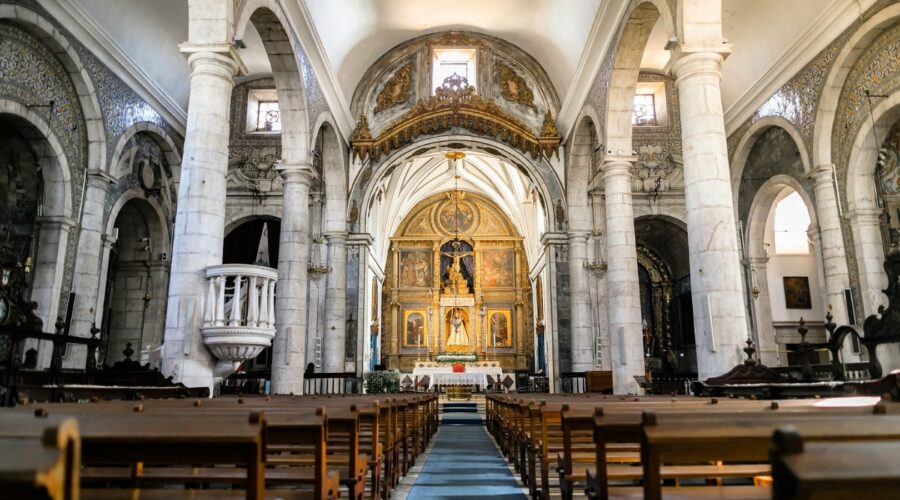
Unveiling the Rich Tapestry of St. Louis Catholic Church: A Historical and Spiritual Journey
Introduction
Nestled in the heart of St. Louis, Missouri, St. Louis Catholic Church stands as a testament to the city’s vibrant Catholic heritage. This grand edifice has witnessed countless generations of faithful seeking spiritual solace, witnessing landmark events, and contributing to the rich cultural fabric of St. Louis.
History of St. Louis Catholic Church
Early Beginnings
The origins of St. Louis Catholic Church can be traced back to 1764, when a group of French fur traders established a settlement on the banks of the Mississippi River. In 1776, Father Pierre Gibault, a French missionary, built a small log chapel to serve the growing Catholic community.
Expansion and Growth
As St. Louis grew, so did the need for a larger church. In 1831, the cornerstone was laid for a new Gothic Revival-style building, which was completed in 1834. This magnificent structure, known as the “Old Cathedral,” served as the city’s main Catholic church for over a century.
The New Cathedral
In the early 20th century, plans were made to build a new cathedral to meet the needs of the expanding Catholic population. In 1914, construction began on the current cathedral building, which was designed in the Late Gothic Revival style. The new St. Louis Cathedral was dedicated in 1926 and remains the spiritual heart of the St. Louis Archdiocese to this day.
Architecture and Art
St. Louis Catholic Church is renowned for its stunning architecture and exquisite artwork.
Exterior
The cathedral’s exterior features flying buttresses, pointed arches, and a towering central spire that reaches a height of 339 feet. The intricate carvings and stained glass windows depict biblical scenes and the lives of saints.
Interior
The interior of the cathedral is equally breathtaking. The vaulted ceilings, marble floors, and ornate altars create a sense of awe and grandeur. Notable artwork includes the “Pieta” by Michelangelo and a series of murals by the renowned American artist John LaFarge.
Community and Outreach
Beyond its architectural and historical significance, St. Louis Catholic Church plays a vital role in the community.
Parochial School
The church operates a thriving parochial school, St. Louis Catholic School, which provides a comprehensive education to students from Pre-K through eighth grade.
Social Ministries
The church is deeply committed to serving the needs of the community through a variety of social ministries. These include a food pantry, a homeless shelter, and a job training program.
Cultural Events
St. Louis Catholic Church hosts a wide range of cultural events throughout the year, including concerts, art exhibitions, and lectures. The church’s renowned Reuter organ is featured in regular recitals and concerts.
Pilgrimages and Spirituality
St. Louis Catholic Church is a popular destination for pilgrims and visitors from around the world.
Devotions
The church is home to several shrines and devotions, including the Shrine of the Miraculous Medal and the Relic of St. Charles Borromeo. Pilgrims often come to pray and seek intercession.
Mass Schedule
Mass is celebrated regularly throughout the week, offering opportunities for spiritual growth and community.
Visiting St. Louis Catholic Church
Visitors are welcome to tour the cathedral and attend mass. Here are some tips for planning your visit:
- Hours: The cathedral is open daily from 7:00 am to 6:00 pm.
- Parking: There is limited parking available on the street and in nearby garages.
- Accessibility: The cathedral is wheelchair accessible.
- Admission: Admission is free of charge.
Conclusion
St. Louis Catholic Church is a magnificent architectural landmark and a vibrant spiritual center. From its humble beginnings to its present-day grandeur, the church has played a pivotal role in the history and community of St. Louis. Its rich tapestry of architecture, art, and social outreach continues to inspire and uplift countless generations of the faithful.
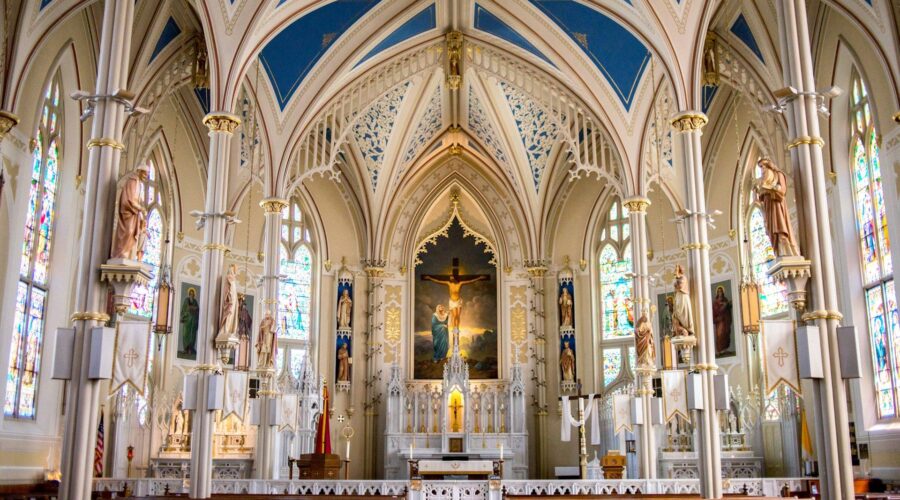
Mount Carmel Church: A Haven of Spirituality and Architectural Beauty
Introduction
Nestled amidst the rolling hills of Haifa, Mount Carmel Church stands as a testament to the enduring spirit of faith and the boundless beauty of architectural artistry. Dedicated to the Virgin Mary, this magnificent basilica attracts pilgrims and tourists alike, offering a sanctuary for spiritual contemplation and a breathtaking spectacle for the eyes. In this comprehensive guide, we will delve into the captivating history, architectural marvels, and spiritual significance of Mount Carmel Church.
History of Mount Carmel Church
Origins and Legends
The roots of Mount Carmel Church can be traced back to the 12th century, when Carmelite hermits established a small chapel on the slopes of Mount Carmel. According to legend, the Prophet Elijah sought refuge in a cave on the mountain, and it is believed that the chapel was built near this sacred site.
Expansion and Pilgrimage
Over the centuries, the chapel grew in size and significance, becoming a popular destination for pilgrims seeking solace and divine intervention. In the 16th century, the church was expanded and fortified by the Crusaders, reflecting the importance of Mount Carmel as a strategic location.
Modern-Day Restoration
In the 19th century, the church underwent extensive renovations under the patronage of Napoleon III. The basilica was reconstructed in the Neo-Gothic style, incorporating elements of Byzantine and Romanesque architecture. Today, Mount Carmel Church stands as a stunning masterpiece, harmoniously blending ancient traditions with modern elegance.
Architectural Wonders
Exterior Splendor
Mount Carmel Church boasts an imposing exterior that dominates the Haifa skyline. Its twin towers soar upwards, adorned with intricate carvings and intricate pinnacles. The main entrance is framed by an elaborate Gothic arch, featuring a stunning rose window that depicts scenes from the life of the Virgin Mary.
Grand Nave and Aisle
Inside the basilica, visitors are greeted by a grand nave and two side aisles, separated by rows of slender columns. The ribbed vaults above create a sense of soaring majesty, echoing the grandeur of medieval cathedrals. The walls are adorned with colorful stained glass windows, casting a vibrant glow on the interior.
Sanctuary and Altar
The heart of the church lies in the sanctuary, where the main altar stands as a centerpiece of devotion. Intricately carved and adorned with precious stones, the altar is a testament to the skill and artistry of its creators. Above the altar is a magnificent baldacchino, a canopy supported by twisted columns, creating a sense of awe and reverence.
Spiritual Significance
Devotion to the Virgin Mary
Mount Carmel Church is a renowned pilgrimage site for Catholics, who revere the Virgin Mary as the patroness of Mount Carmel. The church is believed to be the place where Mary appeared to Saint Simon Stock in the 13th century, giving him the Scapular of Our Lady of Mount Carmel.
Carmelite Spirituality
The church is also a sacred sanctuary for the Carmelite Order, a religious community founded on Mount Carmel. Carmelite spirituality emphasizes contemplation, prayer, and a life of solitude in communion with God.
Interfaith Harmony
Despite its Christian roots, Mount Carmel Church is a symbol of interfaith harmony and coexistence. The church has been visited by pilgrims of all faiths, who come to appreciate its architectural beauty and spiritual significance.
Visiting Mount Carmel Church
Accessibility and Information
Mount Carmel Church is conveniently located in the city of Haifa, easily accessible by public transportation or car. Visitors are welcome to explore the church during designated hours, and guided tours are available.
Dress Code and Etiquette
As a place of worship, visitors are expected to dress respectfully and maintain a quiet and reverent demeanor while inside the church.
Tips for Pilgrims and Travelers
For pilgrims seeking a meaningful experience, it is recommended to attend Mass or spend time in prayer at the church. Travelers can combine their visit with a tour of the Bahai Gardens, located nearby on Mount Carmel. Consider staying in the area to fully immerse yourself in the spiritual and cultural atmosphere.
Conclusion
Mount Carmel Church is a beacon of faith, architectural marvel, and a symbol of interfaith harmony. Its long and storied history, stunning architecture, and profound spiritual significance make it a must-visit destination for pilgrims, travelers, and anyone seeking a glimpse of the sacred and the sublime. As you step into this hallowed space, let the beauty and serenity envelop your soul, inspiring you with a renewed sense of wonder and connection to the divine.
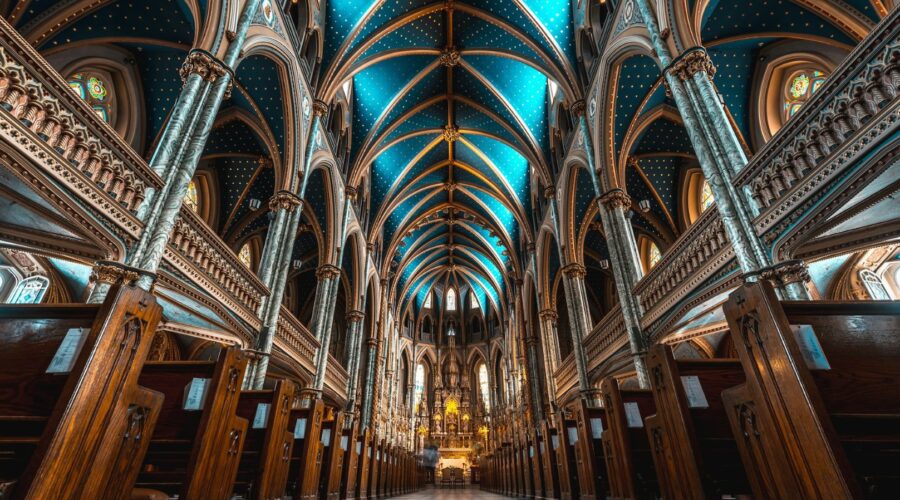
Justin Martyr: A Comprehensive Guide to His Life, Works, and Legacy
Introduction
Justin Martyr, also known as Justin the Philosopher or Justin the Martyr, was an early Christian apologist and philosopher who lived in the 2nd century AD. He is renowned for his apologetic writings, which defended the Christian faith against pagan and Jewish accusations. This blog post aims to provide a comprehensive overview of Justin Martyr’s life, works, and enduring influence on Christianity.
Biography
Early Life and Education
Justin was born circa 100 AD in Flavia Neapolis, Samaria (modern-day Nablus, Palestine). His early education focused on Greek philosophy, and he studied under various teachers in several schools of thought, including Stoicism, Platonism, and Pythagoreanism.
Conversion to Christianity
After years of philosophical exploration, Justin converted to Christianity around 132-135 AD. According to his account, he had a pivotal encounter with an elderly man on the beach, who engaged him in a theological discussion that led him to embrace the Christian faith.
Apologia
Justin is best known for his two “Apologies,” written around 155-162 AD. These works were addressed to the Roman emperors Antoninus Pius and Marcus Aurelius and aimed to defend Christianity against accusations of atheism, immorality, and disloyalty to the state.
Key Arguments
In his Apologies, Justin argued that Christians were not atheists but worshiped the one true God revealed in Scripture. He refuted pagan accusations of Christian immorality by emphasizing the moral teachings of Jesus and the lives of Christian believers. Justin also defended the loyalty of Christians to the empire, arguing that they obeyed all just laws and prayed for the well-being of the emperor.
Dialogue with Trypho
In addition to his Apologies, Justin wrote a dialogue titled “Dialogue with Trypho the Jew,” which records a fictional conversation between himself and a Jewish rabbi named Trypho. In this dialogue, Justin presented a Christian interpretation of the Old Testament and sought to demonstrate the fulfillment of prophecies in the life and teachings of Jesus.
Theology
Justin’s theology was influenced by both Greek philosophy and Christian tradition. He believed in the existence of one God, who created the world and sent his Son, Jesus Christ, to redeem humanity. Justin emphasized the importance of faith, repentance, and baptism for salvation.
Legacy
Justin Martyr’s writings played a significant role in shaping early Christian thought and apologetics. His arguments defended the faith against pagan and Jewish attacks and helped to establish Christianity as a legitimate religion within the Roman Empire. Justin’s emphasis on the reasonableness of the Christian faith influenced later apologists and philosophers.
Table: Key Works by Justin Martyr
| Title | Purpose | Year Written |
|—|—|—|
| First Apology | Defense of Christianity to Emperor Antoninus Pius | 155-162 AD |
| Second Apology | Defense of Christianity to Emperor Marcus Aurelius | 155-162 AD |
| Dialogue with Trypho the Jew | Conversation with a Jewish rabbi about Christianity | 160-165 AD |Conclusion
Justin Martyr stands as a pivotal figure in the history of Christianity. His writings provided a robust defense of the faith against pagan and Jewish objections and contributed significantly to the development of Christian apologetics. Justin’s emphasis on the reasonableness and moral superiority of Christianity helped to legitimize the religion within the Roman Empire and laid the foundation for subsequent theological exploration and thought.
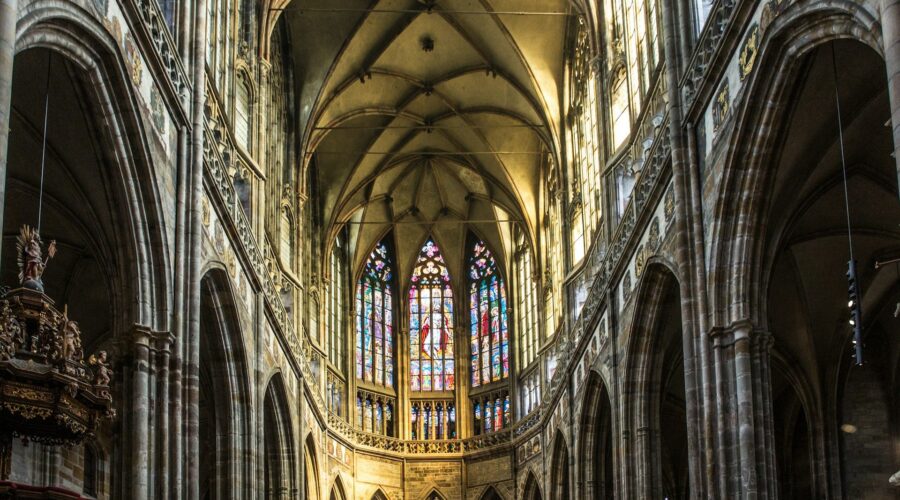
St. Paul the Apostle Catholic Church: A Beacon of Faith in Hingham
A Rich History
Established in 1882, St. Paul the Apostle Catholic Church has served as a spiritual home for generations of Catholics in the Hingham area. The original church building was constructed in 1883 and underwent renovations in 1927 and 1962.
A Vibrant Parish
Today, St. Paul’s is a thriving parish with over 2,000 families. The parish offers a wide range of spiritual, educational, and social programs, including daily Mass, weekly adoration, religious education classes, and youth groups.
A Welcoming Community
St. Paul’s is known for its warm and welcoming community. The parish staff and parishioners are committed to creating a welcoming and inclusive environment for all, regardless of background or beliefs.
Service to the Community
St. Paul’s is actively involved in serving the wider Hingham community. The parish provides financial assistance to families in need, supports local charities, and hosts a food pantry.
Worship Services
Mass Schedule
Day Time Monday 8:30 AM Tuesday 8:30 AM Wednesday 8:30 AM Thursday 8:30 AM Friday 8:30 AM Saturday 4:00 PM, 6:00 PM Sunday 7:30 AM, 9:00 AM, 11:00 AM, 5:00 PM Sacraments
- Baptism
- Reconciliation
- Communion
- Confirmation
- Marriage
- Anointing of the Sick
Education and Formation
Religious Education
St. Paul’s offers a comprehensive religious education program for children in grades 1-8. The program meets weekly and covers a variety of topics, including the Bible, the sacraments, and Catholic morality.
Adult Formation
The parish also offers a variety of adult formation programs, including Bible studies, retreats, and workshops. These programs provide opportunities for adults to deepen their faith and learn more about Catholic tradition.
Social Activities
Parish Council
The Parish Council is a group of parishioners who advise the pastor on matters of parish governance and operations. The council meets monthly and is open to all parishioners.
St. Vincent de Paul Society
The St. Vincent de Paul Society is a parish-based organization that provides financial and emotional support to families in need. The society also provides emergency assistance to those who have been affected by natural disasters or other crises.
Youth Groups
St. Paul’s offers a variety of youth groups for children and teenagers. These groups provide opportunities for young people to participate in spiritual, social, and service activities.
Contact Information
St. Paul the Apostle Catholic Church
1275 Hingham Street
Hingham, MA 02043Phone: (781) 749-9900
Website: www.stpaulhingham.org
Email: [email protected]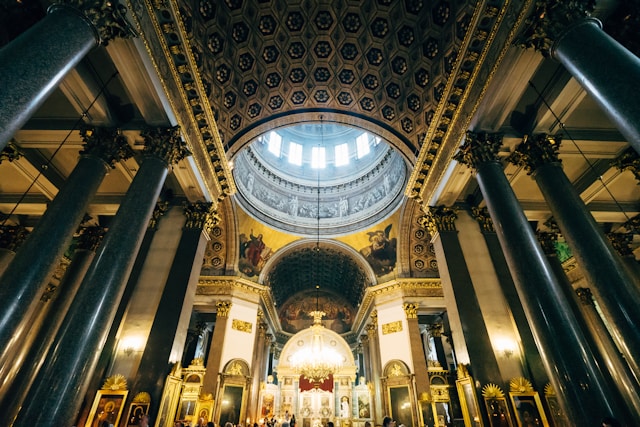
Discover the Holy Significance of Mount Olivet: A Comprehensive Guide
Introduction
Mount Olivet, known as Har HaZeitim in Hebrew, holds a profound spiritual and biblical significance. Located east of Jerusalem, this revered mount offers stunning panoramic views and a rich tapestry of history, religion, and culture.
Religious Importance
Jewish Tradition
- Mount Olivet is believed to be the burial place of the prophet Zechariah.
- According to Jewish tradition, the Mount of Olives will be the site of the resurrection of the dead.
Christian Tradition
- The Garden of Gethsemane, where Jesus prayed before his crucifixion, is located at the foot of Mount Olivet.
- The Church of All Nations, built in 1924, commemorates Jesus’ agony.
- The Dominus Flevit chapel stands on the site where Jesus wept over Jerusalem.
Islamic Tradition
- The Dome of the Ascension, located on the summit of Mount Olivet, marks the spot where Prophet Muhammad ascended to heaven.
- The “Ascent Trail” winds its way up the mountain, a popular pilgrimage route.
Historical Significance
Ancient Times
- Mount Olivet was a royal burial ground for the kings of Judah, including Uzziah and Manasseh.
- The Roman general Titus encamped his legions on the mount during the siege of Jerusalem in 70 CE.
Middle Ages
- During the Byzantine period, the Mount of Olives became a Christian pilgrimage site.
- In the 16th century, the Ottoman Turks built a fortress on the summit.
Modern Era
- The Mount of Olives was captured by Israel in the 1967 Six-Day War.
- Today, it is a peaceful sanctuary, home to churches, monasteries, and olive groves.
Panoramic Views
Mount Olivet offers breathtaking panoramic views of Jerusalem and its surroundings. From the summit, you can gaze upon:
- The Old City of Jerusalem, with its ancient walls and the Dome of the Rock.
- The Temple Mount, the holiest site in Judaism.
- The expansive Judean Desert, stretching out to the east.
Hiking Trails
Several hiking trails wind through the slopes of Mount Olivet, offering a serene and spiritual experience:
- Ascent Trail: This 1-mile trail leads from the Garden of Gethsemane to the summit, following the path Jesus is believed to have taken.
- St. George’s Trail: A 1.5-mile trail that passes by the Tomb of Zechariah and the Dominus Flevit chapel.
- Olive Grove Trail: A peaceful trail that meanders through centuries-old olive groves.
Monasteries and Churches
Mount Olivet is home to several monasteries and churches, each with its unique history and architecture:
- Church of All Nations: A stunning basilica built in the early 20th century, featuring mosaics depicting Jesus’ agony.
- Russian Orthodox Church of the Ascension: A majestic onion-domed church built in the 19th century, offering panoramic views.
- Tomb of Lazarus: A small cave believed to be the burial place of Lazarus, raised from the dead by Jesus.
- St. George Monastery: A Greek Orthodox monastery founded in the 5th century, with a beautiful courtyard and ancient frescoes.
- Wear comfortable shoes as some trails are steep.
- Bring water and snacks, as there are limited facilities on the mount.
- Respect the religious significance of the site and dress modestly.
- Allow ample time to explore the churches, monasteries, and views.
Tips for Visiting Mount Olivet
Conclusion
Mount Olivet, a sacred mountain with a rich historical and religious tapestry, offers a profound exploration of faith, history, and beauty. Whether you are a pilgrim, a hiker, or simply seeking a peaceful retreat, the Mount of Olives will leave an unforgettable mark on your spirit.
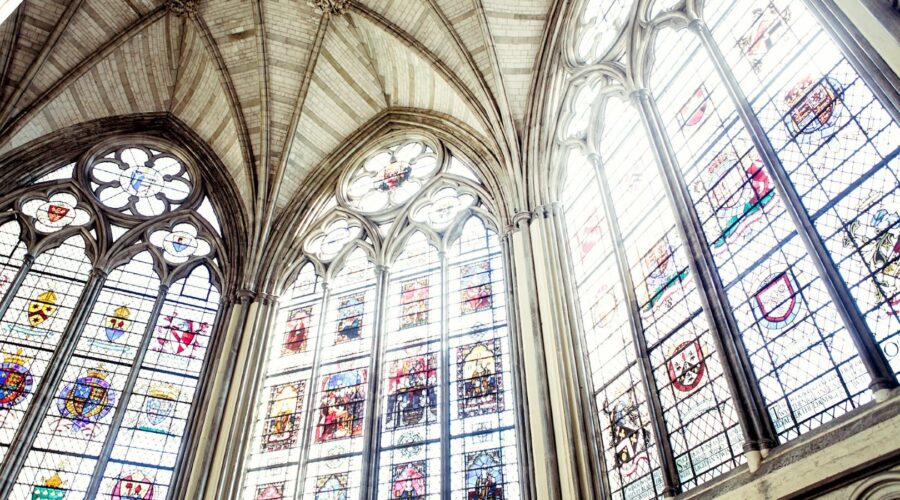
Padre Pio Mass Schedule: A Comprehensive Guide to Attending a Mass at Saint Padre Pio Shrine
Introduction
Padre Pio, also known as Saint Pio of Pietrelcina, was a Catholic priest and stigmatist who became a renowned figure of the 20th century. After his death in 1968, Padre Pio was canonized as a saint by Pope John Paul II in 2002. His shrine in San Giovanni Rotondo, Italy, attracts millions of pilgrims and visitors annually.
If you’re planning to visit the Shrine of Padre Pio and attend one of the Masses, here’s a comprehensive guide to help you plan your pilgrimage:
Mass Schedule
Masses are held daily at the Church of Saint Pio of Pietrelcina, which is located in the heart of the shrine complex.
Mass Schedule Day Time Monday to Saturday 7:00 AM, 8:00 AM, 9:00 AM, 10:00 AM, 11:00 AM, 12:00 PM, 4:00 PM, 5:00 PM, 6:00 PM, 7:00 PM, 8:00 PM Sunday 7:00 AM, 8:00 AM, 9:00 AM, 10:00 AM, 11:00 AM, 12:00 PM, 4:00 PM, 5:00 PM, 6:00 PM, 7:00 PM, 8:00 PM, 9:00 PM Tips for Attending Mass
Here are a few tips to ensure a meaningful and enjoyable experience at Mass:
- Plan ahead: Arrive at least 30 minutes before the scheduled Mass time to secure a seat, especially during peak season or on weekends.
- Dress respectfully: While there is no formal dress code, it’s considered respectful to dress modestly, covering your shoulders and knees.
- Revere the sacredness: Mass is a religious ceremony, so maintain silence and avoid distractions during the service.
- Prepare spiritually: Take some time before Mass to reflect on your intentions and prepare your heart for worship.
- Engage actively: Participate in the Mass by responding to the prayers, hymns, and readings.
Other Information
- Confession: Reconciliation services are available daily before and after each Mass.
- Prayer Area: In addition to the main church, there are other prayer areas within the shrine complex, including the Chapel of Relics and the crypt where Padre Pio’s body is interred.
- Pilgrim Services: The shrine offers various pilgrim services, such as guided tours, spiritual direction, and assistance with accommodations.
Conclusion
Attending Mass at the Shrine of Padre Pio is an enriching spiritual experience that allows pilgrims and visitors to connect with this beloved saint and deepen their faith. By following these guidelines, you can make the most of your pilgrimage and receive the blessings associated with this sacred place.
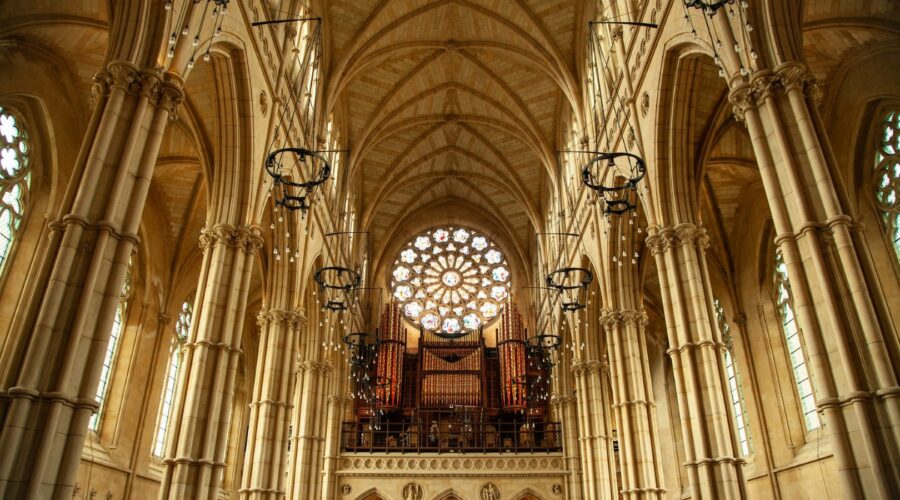
Protestant Denominations: A Comprehensive Guide
Table of Contents
- History of Protestantism
- Core Beliefs
- Major Protestant Denominations
- Differences Between Denominations
- Tips for Choosing a Denomination
History of Protestantism
Protestantism emerged in the 16th century as a reform movement within the Catholic Church. It was sparked by the writings of Martin Luther, who challenged the authority of the Pope and the Catholic Church’s teachings on salvation, sacraments, and the Bible.
Protestantism spread rapidly throughout Europe, leading to the establishment of various denominations, each with its unique beliefs and practices. These denominations played a significant role in shaping the religious and political landscapes of Europe and beyond.
Core Beliefs
Despite their diversity, Protestant denominations share certain core beliefs, including:
- The Bible is the sole authority for faith and practice.
- Salvation is by grace alone, through faith in Jesus Christ.
- Individuals have a direct relationship with God, without the need for intermediaries.
- All believers are called to a life of holiness and service.
Major Protestant Denominations
There are numerous Protestant denominations worldwide. Here are some of the most prominent ones:
Lutheranism
Founded by Martin Luther, Lutheranism emphasizes the authority of Scripture and the concept of justification by faith alone. It is headquartered in Wittenberg, Germany, and has a strong presence in Scandinavia, Germany, and North America.
Calvinism
Founded by John Calvin, Calvinism teaches the doctrine of predestination, emphasizing God’s sovereignty and the eternal security of believers. It has a strong presence in Switzerland, the Netherlands, and the United States.
Baptism
Baptist denominations emphasize the importance of believer’s baptism by immersion. They believe in the separation of church and state, and many churches have a strong focus on evangelism and missions. Baptist denominations are found worldwide, with significant presence in the United States and the United Kingdom.
Anglicanism
The Anglican Communion, also known as the Episcopal Church in the United States, is a global fellowship of churches that traces its origins to the Church of England. Anglicanism emphasizes the importance of tradition, liturgy, and the authority of the Bible. It is present in many countries around the world.
Methodism
Methodism was founded by John Wesley in the 18th century. Methodists emphasize the importance of personal holiness, evangelism, and social justice. The Methodist Church is one of the largest Protestant denominations in the world, with a strong presence in the United States and the United Kingdom.
Pentecostalism
Pentecostalism is a charismatic movement that emphasizes the experience of the baptism of the Holy Spirit, which is believed to bring about supernatural gifts such as speaking in tongues and healing. Pentecostal denominations are widespread, particularly in Latin America, Africa, and Asia.
Evangelicalism
Evangelicalism is a movement within Protestantism that emphasizes the importance of personal conversion, evangelism, and cultural and social engagement. Evangelicals are found in many denominations, particularly those with a strong emphasis on Bible-based preaching and missions.
Differences Between Denominations
While Protestant denominations share core beliefs, they also have distinct differences in their beliefs, practices, and organizational structures.
Denomination Beliefs Practices Organizational Structure Lutheranism Emphasizes justification by faith alone, the authority of Scripture, and the Lutheran Confessions. Uses traditional liturgy and sacraments, with a focus on preaching and Bible study. Episcopal polity, with bishops and lay elders. Calvinism Teaches predestination, the sovereignty of God, and the authority of Scripture. Emphasizes simplicity in worship, with a focus on the preached Word and prayer. Presbyterian polity, with elders and deacons. Baptism Believes in the separation of church and state, the priesthood of all believers, and believer’s baptism by immersion. Autonomous congregations, with a strong emphasis on evangelism and missions. Congregational polity, with a pastor and deacons. Anglicanism Emphasizes the authority of tradition, liturgy, and the Bible. Uses a blend of traditional and modern liturgies, with a focus on the sacraments. Episcopal polity, with bishops and a hierarchical structure. Methodism Emphasizes personal holiness, evangelism, and social justice. Uses a diverse range of worship styles, from traditional to contemporary. Connectional polity, with an itinerant ministry and lay leadership. Pentecostalism Believes in the experience of the baptism of the Holy Spirit, which is accompanied by supernatural gifts. Emphasizes charismatic worship, with a focus on praise and worship music. Autonomous congregations, with a strong emphasis on evangelism and missions. Evangelicalism Emphasizes personal conversion, evangelism, and cultural and social engagement. Uses a wide range of worship styles, with a focus on Bible-based preaching and missions. Denominational structures vary depending on the specific evangelical organization. Tips for Choosing a Denomination
Choosing a Protestant denomination is a personal decision. Here are some tips to help you find a church home:
- Visit different churches and observe their worship services, teachings, and community involvement.
- Read about different denominations and their beliefs, practices, and history.
- Talk to church members and pastors to get a sense of the church’s culture and values.
- Pray for guidance and seek the advice of trusted friends, family, or mentors.
- Consider your own beliefs and values, and look for a denomination that aligns with them.
- Remember that no church is perfect. Focus on finding a community where you feel welcomed, supported, and challenged to grow in your faith.
Choosing a Protestant denomination is a significant step in your spiritual journey. By prayerfully considering the different options and seeking God’s guidance, you can find a church home where you can grow in your faith and experience the fullness of God’s love.
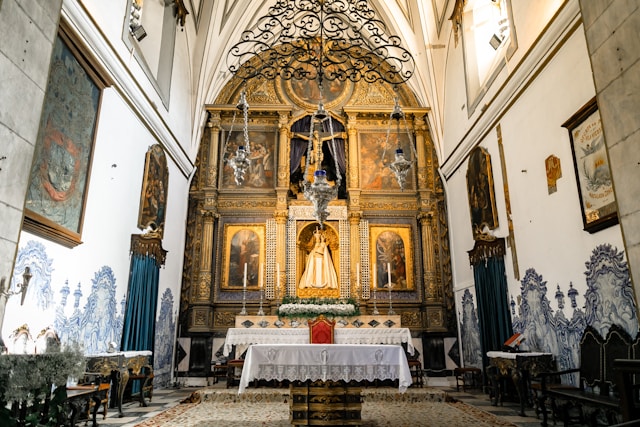
Discover the Historical and Spiritual Significance of the Church of the Assumption**
**
**
Introduction**
The Church of the Assumption, located in various parts of the world, holds a profound historical and spiritual significance. This majestic edifice has witnessed centuries of faith, devotion, and architectural brilliance. In this comprehensive guide, we delve into the rich tapestry of the Church of the Assumption, exploring its history, architectural features, and the spiritual impact it has had on generations of believers.
**
Historical Origins**
The origins of the Church of the Assumption can be traced back to the early days of Christianity. The belief in the bodily ascension of Mary, the mother of Jesus, into heaven became widespread in the 4th century. As a testament to this belief, churches dedicated to the Assumption began to emerge throughout the Byzantine Empire and later in Western Europe.
**
Architectural Splendor**
The Church of the Assumption showcases a diverse array of architectural styles, reflecting the different eras in which it was built. From the grand Byzantine basilicas of the early centuries to the Gothic cathedrals of the Middle Ages, each architectural manifestation embodies the prevailing artistic sensibilities of its time.
**
Byzantine Architecture**
The Church of the Assumption in Istanbul, Turkey, built in the 6th century, is a prime example of Byzantine architecture. Its massive dome, supported by four massive pillars, creates a sense of immense space and grandeur. The interior is adorned with stunning mosaics depicting biblical scenes and the life of Mary.
**
Gothic Architecture**
The Church of the Assumption in Caen, France, exemplifies the Gothic style. Constructed in the 11th century, its soaring spires and pointed arches evoke a sense of awe and aspiration. The stained glass windows depict vivid scenes from the Gospel narratives, illuminating the interior with vibrant colors.
**
Spiritual Significance**
The Church of the Assumption is not merely an architectural marvel but also a place of profound spiritual significance. It has been a pilgrimage site for centuries, attracting countless believers seeking solace, guidance, and a connection to the divine.
**
Assumption of Mary**
The feast of the Assumption, celebrated on August 15th, commemorates the belief that Mary, after her earthly life, was taken bodily into heaven. This event holds central importance in the Catholic tradition and is a reminder of the hope of eternal life for all believers.
**
Marian Devotion**
The Church of the Assumption has been a focal point of Marian devotion, the veneration of Mary as the mother of Jesus. Throughout history, countless miracles and apparitions have been attributed to Mary, solidifying her place as a beloved figure in Christian piety.
**
Cultural Impact**
Beyond its religious significance, the Church of the Assumption has had a profound cultural impact. It has inspired countless works of art, literature, and music, enriching the cultural heritage of various nations.
**
Art and Architecture**
The Church of the Assumption has served as a source of inspiration for countless artists and architects. From the iconic paintings of the Italian Renaissance to the modernist designs of the 20th century, the Assumption theme has left an enduring mark on Western art.
**
Music and Literature**
The Assumption has also been a recurring theme in music and literature. Composers such as Handel and Mozart have created oratorios and masses celebrating the event. Poets and writers, including Dante and Milton, have explored the Assumption in their works.
**
Conclusion**
The Church of the Assumption is a testament to the enduring power of faith, the beauty of architecture, and the profound cultural impact of religion. From its historical origins to its spiritual significance, the Assumption of Mary has shaped the lives of countless believers and inspired generations of artists and thinkers. As a symbol of hope and a reminder of our connection to the divine, the Church of the Assumption will continue to be a source of inspiration and awe for centuries to come.
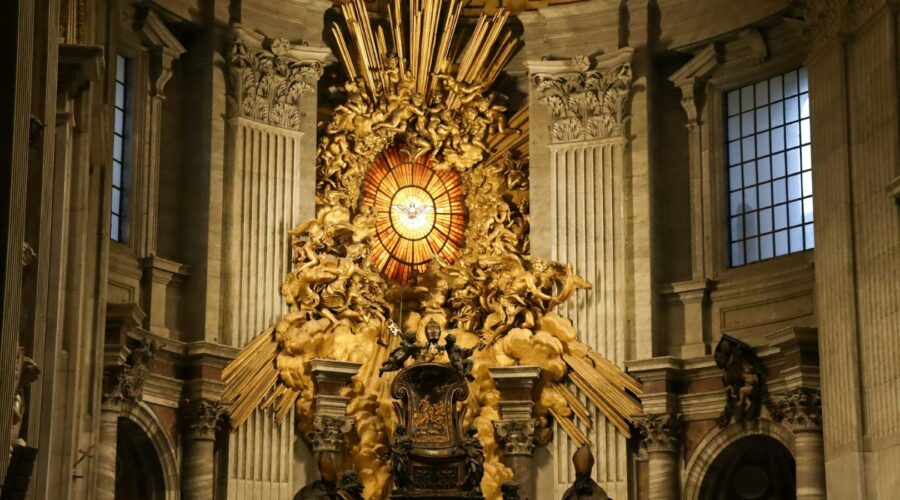
Unveiling the Byzantine Catholic Tradition: A Journey into Eastern Christianity
Introduction
Embark on a fascinating exploration of the Byzantine Catholic Church, a unique branch of Christianity that bridges the East and West. With its rich history, vibrant liturgy, and diverse traditions, the Byzantine Catholic Church offers a captivating glimpse into the world of Eastern Christianity.
History of the Byzantine Catholic Church
Origins in the Byzantine Empire
The Byzantine Catholic Church traces its roots to the Byzantine Empire, a powerful Eastern Roman Empire that flourished from the 4th to the 15th centuries. During this period, the Eastern Christian Church, centered in Constantinople, developed distinct liturgical and theological practices.
Great Schism of 1054
In 1054, the Great Schism divided the Eastern and Western Christian Churches, with the Byzantine Church aligning with the East. However, some Byzantine Christian communities in Central and Eastern Europe remained loyal to the Pope of Rome.
Union of Brest-Litovsk (1596)
In 1596, the Union of Brest-Litovsk reunited a significant number of Orthodox Christians in Eastern Europe with the Catholic Church. These communities formed the core of the Byzantine Catholic Church, while retaining their Eastern liturgical traditions.
Liturgy and Worship
The Byzantine Catholic liturgy is a vibrant and immersive experience that transports worshippers into a realm of divine beauty. Central to the liturgy is the celebration of the Divine Liturgy, also known as the Holy Mass.
Divine Liturgy
The Divine Liturgy is a highly structured service that follows a specific order of prayers, hymns, and ritual actions. It is celebrated by a priest, assisted by a deacon and other liturgical ministers.
Iconography
Icons play an important role in Byzantine Catholic worship, serving as representations of Christ, the Virgin Mary, and the saints. Icons are venerated as sacred objects, and their presence in the church helps to create a sense of the divine.
Beliefs and Practices
Eastern Christian Tradition
The Byzantine Catholic Church is fully committed to the Eastern Christian tradition, maintaining its distinctive liturgy, theology, and spirituality. It recognizes the authority of the Pope of Rome but remains within the Eastern liturgical and theological framework.
Seven Sacraments
Like the Catholic Church, the Byzantine Catholic Church recognizes the seven sacraments instituted by Christ: Baptism, Confirmation, Eucharist, Penance, Anointing of the Sick, Holy Orders, and Matrimony.
Celibacy and Marriage
Byzantine Catholic priests and bishops live a celibate life, while deacons and other ordained ministers are permitted to marry. Marriage is considered a sacred union and is blessed by the Church.
Diversity within Unity
The Byzantine Catholic Church is a diverse community, with different jurisdictions and liturgical traditions. The largest concentration of Byzantine Catholics is found in Ukraine, followed by other countries in Eastern Europe, the United States, and Canada.
Ruthenian
The largest jurisdiction within the Byzantine Catholic Church is the Ruthenian Church, which serves Ukrainian and Eastern European communities in the United States and Canada.
Melkite
The Melkite Church is an Arabic-speaking jurisdiction that originated in the Middle East. It is found in various regions, including North America, South America, and the Middle East.
Other Jurisdictions
Other jurisdictions within the Byzantine Catholic Church include the Slovak, Romanian, and Hungarian Churches, representing communities from their respective countries.
Conclusion
The Byzantine Catholic Church is a vibrant and multifaceted branch of Christianity that combines the richness of Eastern Christian tradition with the unity of the Catholic Church. Its liturgy, beliefs, and practices offer a unique and profound spiritual experience, inviting both Catholics and Eastern Christians to appreciate the beauty of Christianity’s diverse expressions.
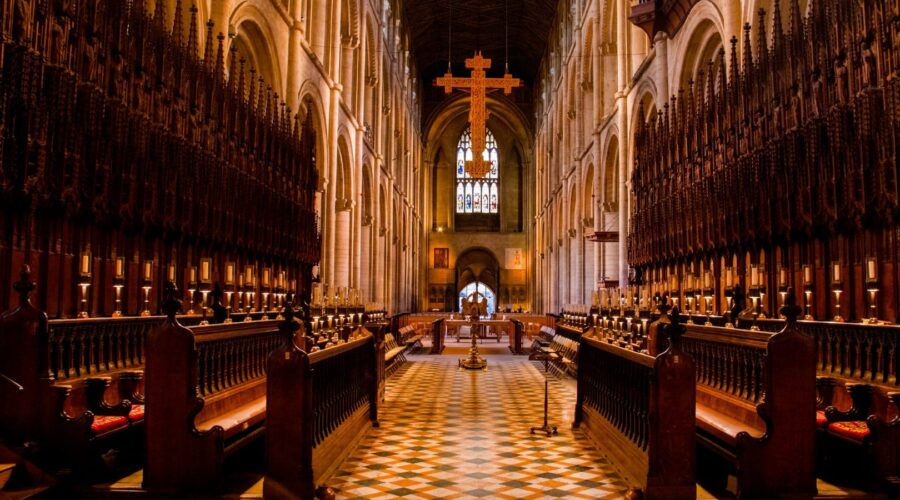
St. Luke the Evangelist: A Comprehensive Guide
Introduction:
St. Luke is one of the four evangelists, authors of the gospels in the New Testament. He is also the author of the Acts of the Apostles. Luke’s writings provide valuable insights into the life and teachings of Jesus Christ, as well as the early history of the Christian Church.
Early Life and Medical Career:
Luke was born in Antioch, Syria, during the first century AD. He was a Greek-speaking Gentile and a physician by profession. According to tradition, he converted to Christianity after meeting the Apostle Paul.
Travels and Missionary Work:
Luke travelled extensively with Paul on his missionary journeys. He accompanied Paul on his second missionary journey through Macedonia and Greece, and on his third journey through Asia Minor and Greece. Luke also travelled with Paul to Jerusalem and Rome.
The Gospel of Luke:
The Gospel of Luke is one of the three synoptic gospels, along with Matthew and Mark. It was probably written around 80-90 AD. Luke’s gospel is characterized by its emphasis on the humanity of Jesus, his compassion for the poor and marginalized, and his message of salvation for all people.
The Acts of the Apostles:
The Acts of the Apostles is a historical account of the early Christian Church. It covers the period from the ascension of Jesus to the imprisonment of Paul in Rome. Acts provides valuable information about the spread of Christianity throughout the Roman Empire.
Luke’s Contribution to Christianity:
Luke’s writings have had a profound impact on Christianity. His gospel and Acts provide essential information about the life and teachings of Jesus Christ, as well as the early history of the Church. Luke’s emphasis on the humanity of Jesus and his message of salvation for all people has been foundational for Christian theology and practice.
Legacy and Veneration:
Luke is considered a saint by the Catholic Church, the Eastern Orthodox Church, and the Anglican Communion. He is the patron saint of physicians, surgeons, artists, and historians.
Conclusion:
St. Luke the Evangelist was a key figure in the early Christian Church. His writings have had a lasting impact on Christianity, providing valuable insights into the life and teachings of Jesus Christ, as well as the early history of the Church. Luke’s legacy continues to inspire and guide Christians today.
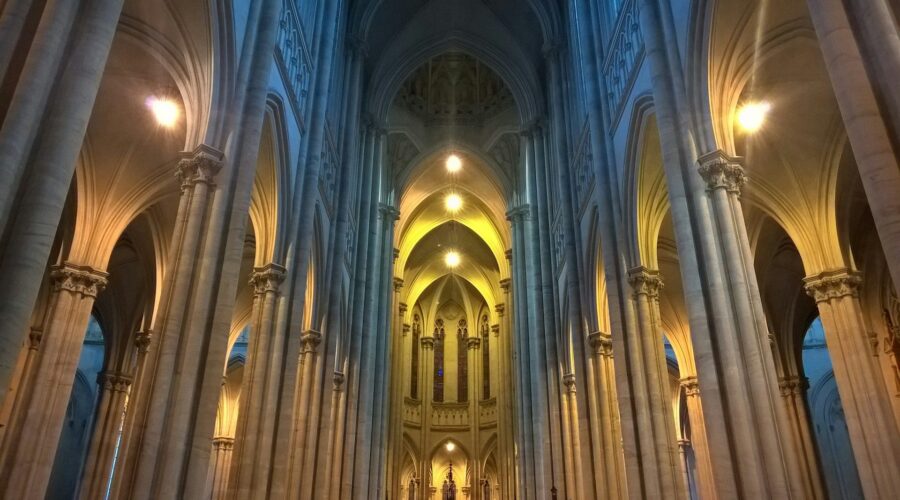
St. Jerome Church: A Historical and Architectural Gem in the Heart of New York City
Nestled in the bustling neighborhood of Inwood, Manhattan, St. Jerome Church stands as a testament to the rich history and architectural beauty of New York City. This magnificent Roman Catholic parish, established in 1899, has become an iconic landmark known for its stunning Neo-Romanesque design, intricate stained glass windows, and its enduring legacy as a spiritual center.
The History of St. Jerome Church
The story of St. Jerome Church begins in the late 19th century as the Inwood area experienced rapid growth. In 1891, a small wooden chapel was built on the site of the present-day church to serve the growing Catholic population. However, as the community continued to expand, it became evident that a larger and more substantial edifice was needed.
In 1899, plans were drawn up for a new church building designed by the renowned architect James Renwick Jr., known for his work on the Smithsonian Institution and Grace Church. Construction began shortly after, and the cornerstone was laid on June 11, 1899. The church was completed in 1904 and officially dedicated on September 25th.
Architectural Marvel
St. Jerome Church is an architectural masterpiece that embodies the grandeur of the Neo-Romanesque style. The exterior is constructed of red brick and limestone, with intricate carvings and decorative elements that are reminiscent of medieval cathedrals. The massive bell tower, which stands at 150 feet tall, is a prominent feature of the church’s facade.
Inside, the church boasts vaulted ceilings adorned with vibrant murals, marble columns, and gleaming gold leaf accents. The sanctuary features a magnificent altar carved from Italian Carrara marble, while the stained glass windows depict scenes from the life of St. Jerome and other biblical figures.
Stained Glass Windows
One of the most captivating aspects of St. Jerome Church is its collection of exquisite stained glass windows. Crafted by skilled artisans, these windows depict a wide range of religious scenes, from the Annunciation to the Crucifixion. The vibrant colors and intricate details of the windows create a mesmerizing effect, transforming the sanctuary into a kaleidoscope of light.
Role in the Community
Throughout its history, St. Jerome Church has played a vital role in the Inwood community. It has served as a spiritual center for generations of Catholic families, providing baptisms, marriages, and other sacraments. The church also hosts a variety of community events, including food drives, soup kitchens, and educational programs.
In addition to its religious mission, St. Jerome Church has been a strong advocate for social justice and community outreach. The church has partnered with local organizations to provide support for the homeless, the elderly, and the underprivileged. It has also been a vocal advocate for peace and interfaith dialogue.
Visiting St. Jerome Church
St. Jerome Church is open to the public and welcomes visitors from all walks of life. Guided tours are available by appointment, allowing visitors to admire the church’s architectural beauty and learn about its rich history.
Mass is celebrated daily at St. Jerome Church, and visitors are welcome to attend. The church also hosts a variety of special events throughout the year, including concerts, lectures, and art exhibitions.
Conclusion
St. Jerome Church is a testament to the enduring power of faith, architecture, and community. As a historical landmark, an architectural masterpiece, and a spiritual center, it continues to inspire and uplift those who visit its hallowed halls. Whether you are seeking a moment of quiet reflection or an appreciation for the beauty of sacred art, St. Jerome Church is a destination that will leave a lasting impression.
Frequently Asked Questions
- When was St. Jerome Church built?
St. Jerome Church was constructed between 1899 and 1904. - Who designed St. Jerome Church?
St. Jerome Church was designed by renowned architect James Renwick Jr. - What is the architectural style of St. Jerome Church?
St. Jerome Church is an example of the Neo-Romanesque architectural style. - Is St. Jerome Church open to the public?
Yes, St. Jerome Church is open to the public and welcomes visitors. - Can I get married at St. Jerome Church?
Yes, St. Jerome Church performs weddings for its parishioners.
- When was St. Jerome Church built?
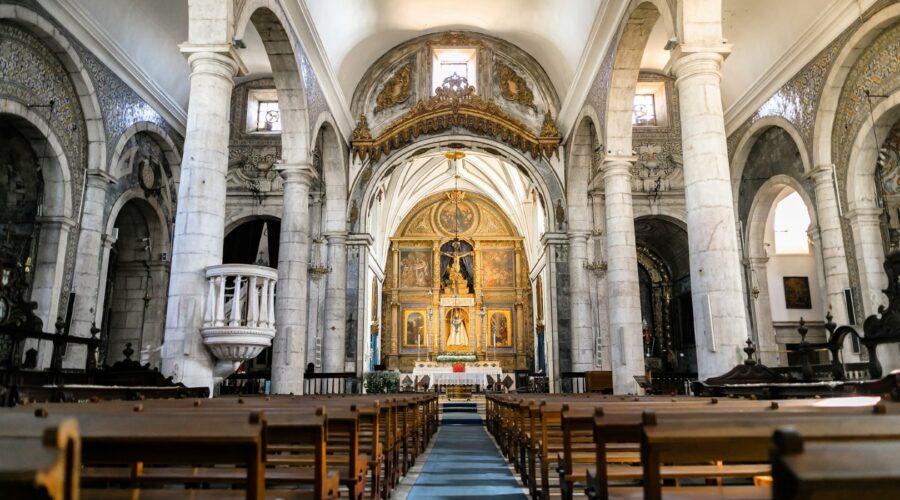
Discover the 2021 USCCB Daily Readings: A Comprehensive Guide for Catholics
Introduction
The United States Conference of Catholic Bishops (USCCB) provides daily readings from the Bible as a resource for Catholics to deepen their spiritual life and connect with God’s word. These readings are an essential part of daily prayer and devotion, offering guidance, inspiration, and nourishment for the soul. This blog post provides a comprehensive overview of the USCCB daily readings for 2021, including their purpose, structure, and how to incorporate them into your daily routine.
Purpose of the USCCB Daily Readings
The primary purpose of the USCCB daily readings is to:
- Foster a Relationship with God: The readings help Catholics build a personal relationship with God through daily encounters with His word.
- Provide Spiritual Nourishment: The readings offer nourishment for the soul, providing wisdom, comfort, and strength for everyday challenges.
- Guide Daily Living: The readings offer guidance and inspiration for daily decision-making and living in accordance with God’s will.
Structure of the USCCB Daily Readings
The USCCB daily readings are structured according to the liturgical calendar:
- Daily Readings: Each day’s reading consists of two passages from the Old Testament or New Testament, followed by a Gospel passage. These readings are accompanied by a responsorial psalm and a reflection.
- Sunday Readings: Readings on Sundays are more extensive and include readings from the Old Testament, a psalm, an epistle, and a Gospel passage.
- Feast Days: On special feast days, the readings reflect the significance of the celebration, with unique passages relevant to the saint or event being honored.
Incorporating the USCCB Daily Readings into Your Routine
Here are some tips for incorporating the USCCB daily readings into your daily routine:
- Set a Dedicated Time: Choose a specific time each day for reading the daily readings, whether it’s first thing in the morning, during your lunch break, or before bed.
- Find a Quiet Space: Create a peaceful environment where you can focus on the readings without distractions.
- Engage with the Readings: Read the passages attentively, reflect on their meaning, and allow them to speak to your heart.
- Pray: Use the readings as a basis for prayer, thanking God for His word and asking for guidance in your life.
- Connect with Others: Share your insights and reflections with family, friends, or a faith-sharing group.
Resources for USCCB Daily Readings
- USCCB Daily Bible Readings
- Loyola Press Daily Devotions
- Catholic.org Daily Readings
- Franciscan Media Daily Readings
Conclusion
The USCCB daily readings are a valuable resource for Catholics seeking spiritual growth and connection with God’s word. By incorporating these readings into your daily routine, you can nourish your soul, guide your daily life, and deepen your relationship with the Lord. Whether you read them alone or share them with others, the USCCB daily readings offer a profound opportunity to encounter God and experience the transformative power of His word.